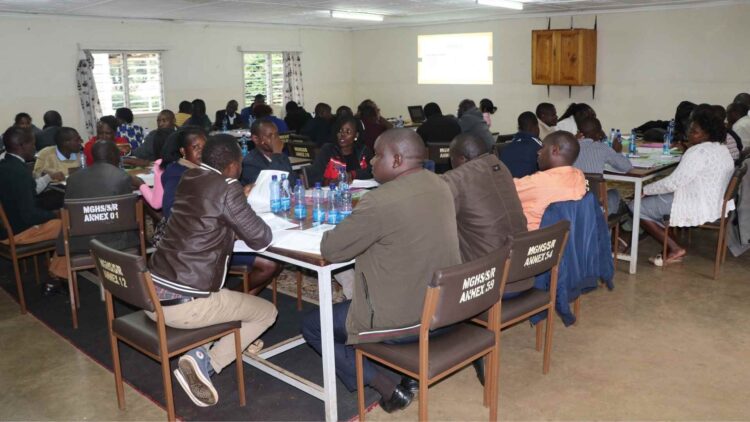7,000 Secondary School Principals Set for Senior School Management Training.
From Thursday to Saturday, 7,000 secondary school principals will be trained on the upcoming transition from junior to senior school. The training, spread across 50 centres in Kenya’s 47 counties, aims to equip school leaders for the rollout of senior school under the Competency-Based Curriculum (CBC), set to begin in January 2026.
The training programme is being spearheaded by officials from the Ministry of Education, the Kenya National Examinations Council (KNEC), the Kenya Institute of Special Needs Education (KISE), and the Teachers Service Commission (TSC). The Centre for Mathematics, Science and Technology Education in Africa (CEMASTEA) emphasized the critical role principals play in the success of CBC implementation.
They stated that strengthening the capacity of these school heads is essential for a smooth transition to senior school, with Grade Nine learners set to advance in 2026.
While the nationwide programme kicks off, a group of principals from Central Kenya counties including Murang’a, Kiambu, Nyandarua, Nakuru, Machakos, Makueni, Tharaka Nithi, and Laikipia have already been in Mombasa since Monday for early retooling. The principals invited senior education officials, led by the TSC’s Director of Staffing, to oversee the sessions and deliver remarks from the TSC CEO.
Career Pathways and School Categorisation
The TSC emphasized that the upcoming transition marks a major shift in education, especially with the introduction of career pathways designed to match learners’ strengths and ambitions.
Senior schools will either offer all three pathways—STEM (Science, Technology, Engineering and Mathematics), Arts and Sports Science, and Social Sciences—or be limited to two, with STEM being compulsory.
The commission stated that principals are expected to be at the forefront of this transition, ensuring that the CBC is successfully implemented in their institutions.
It was highlighted that strong leadership is vital in creating a conducive learning environment, providing the right facilities, and ensuring teachers are properly trained. The shift to competency-based teaching is meant to produce learners ready for a dynamic and innovative job market.
The Cabinet Secretary for Education informed the National Assembly that the government plans to train and retool 212,000 teachers by January 2026. This effort is part of the broader strategy to ensure schools are prepared to handle the demands of the new curriculum.
Readiness of Secondary Schools
According to the Kenya Secondary Schools Heads Association (KESSHA), over 10,000 secondary schools are ready to welcome Grade 10 learners.
They reported that sufficient space exists in these schools, largely due to the exit of the 8-4-4 system and the anticipated departure of Form Four candidates. Additional classrooms had already been constructed in expectation that Junior Secondary might be placed in these institutions.
Read Also: MPs Raise Concerns Over TVET Exam Costs and KUCCPS Placement Fees
Despite the progress, school heads have expressed concerns about limited resources. It was noted that schools continue to face challenges in mobilising funds and are grappling with delayed capitation.
The KESSHA chair called on the government to allocate sufficient funding, particularly as most national, extra-county, and large county schools are expected to implement all three career pathways. He stressed that all schools must offer the STEM pathway and said that the ongoing retooling is a necessary step toward ensuring readiness.
7,000 Secondary School Principals Set for Senior School Management Training.
Follow Teachers Updates on Facebook, LinkedIn, X (Twitter), WhatsApp, Telegram, and Instagram. Get in touch with our editors at hello@teachersupdates.news.



Discussion about this post